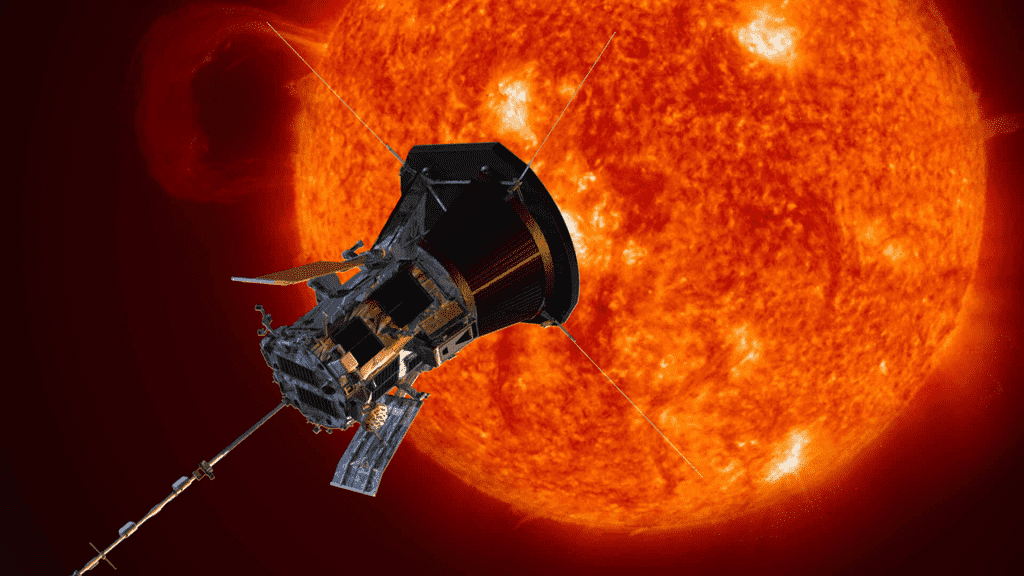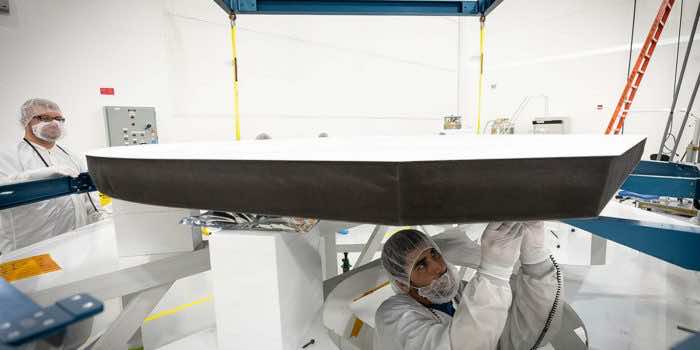The Parker Solar Probe is a spacecraft the size of a small car, that was launched during solar minimum, a regular period of most minor solar activity in the Sun’s 11-year solar cycle in 2018.
Currently, the spacecraft has approached its 13th perihelion, or close encounter, with the Sun on September 6.
“Nobody has ever flown through a solar event so close to the Sun before,” Nour Raouafi, Parker Solar Probe project scientist at the Johns Hopkins Applied Physics Laboratory (APL) in Laurel, Maryland, said in a statement. “The data would be totally new, and we would definitely learn a lot from it.”
NASA had reported earlier this summer that Solar Cycle 25 was already exceeding predictions for solar activity, even with the expected solar maximum in 2025.
These observations will help us understand the physics of the Sun and predict space weather more accurately. This can affect electric grids, communications and navigation systems, astronauts, satellites in space, and more. Parker’s Wide-field Imager for Solar Probe (WISPR) instrument has already imaged a small number of CMEs from a distance, which has led to unexpected discoveries about the structure of CMEs.

“Parker Solar Probe is built to withstand whatever the Sun can throw at it,” said Doug Rodgers, APL’s science operations center coordinator for the mission. “Every orbit is different, but the mission is a well-oiled machine at this point.”
NASA’s Parker Solar Probe might catch a solar flare as it flies into the Sun — here’s how
Parker Solar Probe’s heat shield is made of two panels of superheated carbon-carbon composite sandwiching a lightweight 4.5-inch-thick carbon foam core.
Parker was designed by the Johns Hopkins Applied Physics Laboratory and was built at Carbon-Carbon Advanced Technologies, using a carbon composite foam sandwiched between two carbon plates, according to a release. It has a coating of white ceramic paint on the sun-facing plate to reflect as much heat as possible.
However, not all parts are shielded from the sun. For example, the Solar Probe Cup — a sensor designed to measure the ion and electron fluxes and flow angles from the solar wind — is one of the instruments that the heat shield will not protect.
Electronic wiring was another challenge – cables would generally melt from exposure to heat radiation in such proximity to the Sun.
To ensure the instrument was ready for the harsh environment, the researchers emulated the Sun’s intense heat radiation in a lab.
The spacecraft is also designed to keep itself safe and on track to the Sun on its own. Several sensors that are attached to the body of the spacecraft along the edge of the shadow from the heat shield will alert the central computer if they detect sunlight. The spacecraft can then correct its position to protect the sensors and the rest of the instruments safely.
“By combining the data from multiple space missions and even ground observatories, we can understand the bigger picture,” Raouafi said. “In this case, with both Parker and Solar Orbiter observing the Sun from different distances, we will be able to study the evolution of the solar wind, gathering data as it passes one spacecraft and then the other.”
Meanwhile, Raouafi is already looking ahead to future close encounters.
“While the Sun was quiet, we did three years of great science,” he said. “But our view of the solar wind and the corona will be totally different now, and we’re very curious to see what we’ll learn next.”


